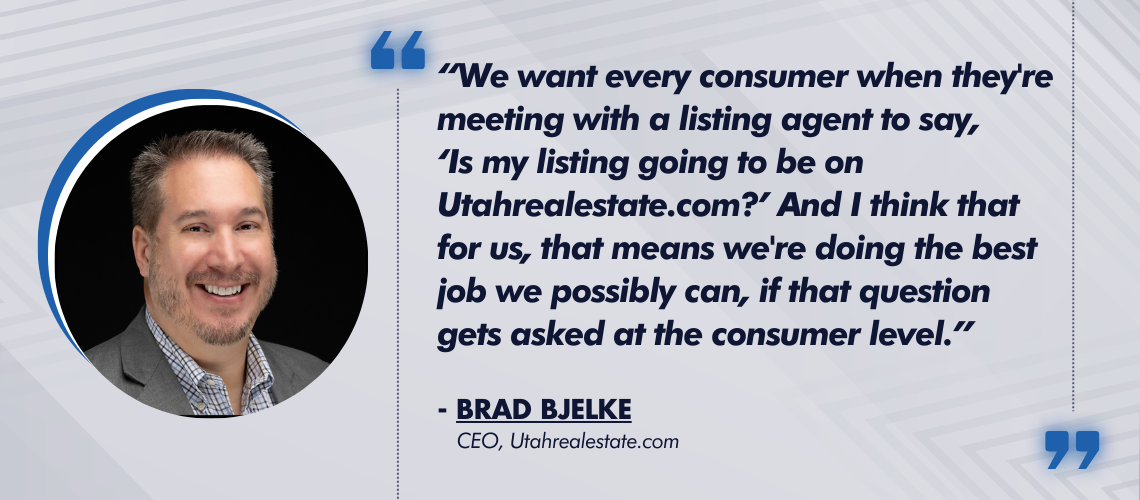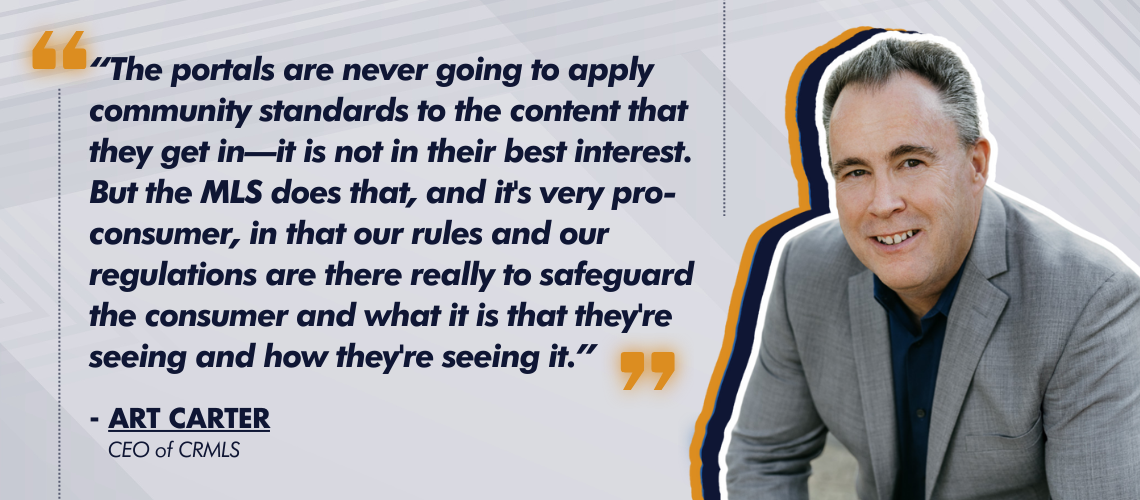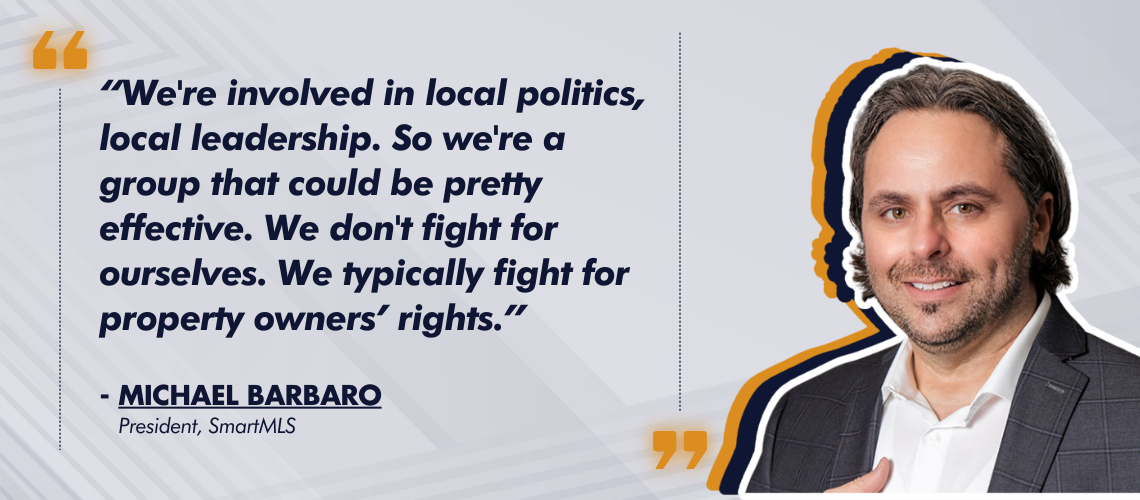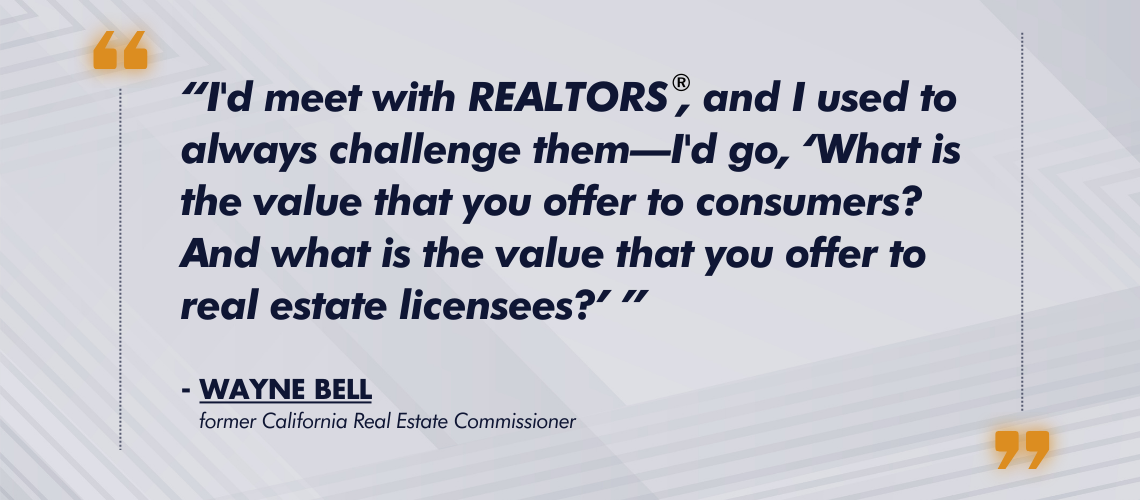Brad Bjelke is the CEO of UtahRealEstate.com, Utah’s largest MLS. Having recently launched a data-sharing product intended to allow MLSs to better build partnerships with folks outside of the real estate industry, Bjelke’s region was at the forefront of consumer outreach and branding decades ago.
“We want every consumer when they’re meeting with a listing agent to say, ‘Is my listing going to be on Utahrealestate.com?’ And I think that for us, that means we’re doing the best job we possibly can, if that question gets asked at the consumer level,” he said.

For years, Bjelke said the whole real estate community has placed a specific and unique emphasis on its consumer portal, which offers the same sort of modern interface and accessibility that the big third-party companies do, getting about 8 million unique visitors a year.
That’s not something most MLSs—even the big ones—have even tried to do, as consumers now associate the kind of data and search functions they need in their home search with companies like Zillow, Redfin, Homes.com or Realtor.com®—not the local MLS, which is feeding those companies the listing data.
Does that need to change in 2025? As consumers are bombarded with negative headlines about real estate, and with a continued lack of understanding regarding actual structure of the industry, what do MLSs need to do in order to educate—or even directly serve—buyers and sellers?
Lund praises Bjelke’s ecosystem, and also singles out the Houston Association of REALTORS® (HAR), whose consumer portal ranks as the sixth-largest in the country by some metrics.
At the national level, the Broker Public Portal (BPP)—a long-running project that has experienced numerous setbacks and delays—is set for launch next month, according to Lund (Lund himself has worked on the project for much of its history).
Asked whether the BPP is meant to compete with the entrenched incumbents, Lund said its purpose is to give MLSs “a competitive product in the mix.”
“It’s a unique company because it cannot issue any dividends or profits to its shareholders. So every dollar that was invested goes into building the product, and every dollar that’s collected by the product goes into making it better,” Lund said.
But at this late stage in the game, is it viable (or advisable) to directly challenge multi-billion-dollar mega-companies on their home turf to get in front of consumers? Other MLSs are still trying, with Bright MLS’ Nestfully portal seeking to carve out a niche through an emphasis on agent-to-consumer connections.
For his part, Carter said that MLSs need to propagate a particular message, regardless of how they’re specifically seeking to get in front of consumers—making it clear how they already offer something more than the portals do.
“The portals are never going to apply community standards to the content that they get in—it is not in their best interest,” he said. “But the MLS does that, and it’s very pro-consumer, in that our rules and our regulations are there really to safeguard the consumer and what it is that they’re seeing and how they’re seeing it, and the reliability of the data that’s being put in front of them. Portals don’t do any of that. They’re not going to.”

Kulkarni highlighted a different dynamic—how the portals get between consumers and agents, and are often selling them leads and controlling how consumers find or learn about agents. He put the onus back on the real estate industry industry—and MLSs in particular—to fix this.
“If you don’t like it, do something about it,” Kulkarni said. “It’s really easy to complain. It’s really hard to do something about it. It’s really hard to train your agents so you don’t need to pay somebody else to train. It’s really hard to give them tools; it’s really hard to give them data and insights, but it’s really easy to complain and say, ‘I don’t like you selling (my own data and leads) back to me.’”
As Carter continues to call the MLS system “the biggest gift” from brokerages to consumers (as well as to mortgage professionals and other industry participants), how hard will it be to bring this message to the average American, especially with all the recent negative headlines?
Only time will tell, but Bjelke said his region has had significant success getting in front of buyers and sellers—both through direct marketing efforts, as well as more indirect ways like providing data to researchers and public officials.
“I think good MLSs know that their data is very valuable,” he said. “I think that’s been the part that MLSs have missed over the years—no one really knows where it’s coming from, but it’s coming from the MLS. Branding it as an MLS-sourced piece of data gives that MLS even more value.”
Making sure that academics, policymakers or journalists who use MLS data for research attribute and credit the source can go a long way in giving the MLS authority and building trust in the minds of consumers, Bjelke said, and is something almost any MLS of any size can work on (though he acknowledges that generally, larger MLSs have more valuable datasets and potentially more opportunities to get their names out there).
Even very small MLSs have a chance to work with local media or universities, though, and leverage their data for branding without investing in big marketing expenses, according to Bjelke.
Barbaro points out that the “one and a half million little lobbyists” that make up the REALTOR® community are “in every nook and cranny of every state in the country,” but rarely are advocating for themselves.
“We’re involved in local politics, local leadership. So we’re a group that could be pretty effective. We don’t fight for ourselves. We typically fight for property owners’ rights,” he said.

Why hasn’t the REALTOR® community historically spread the word on their own value, or on the value of systems like the MLS, the foundation their businesses and livelihoods are built on? Is that the kind of message that individual agents and brokers can effectively carry out into the world—perhaps more effectively than TV ad campaigns or billboards?
Bell explained that in his experience as someone who oversaw more than 100,000 REALTORS® in California, many don’t even understand themselves what their value is.
“I’d meet with REALTORS®, and I used to always challenge them—I’d go, ‘What is the value that you offer to consumers? And what is the value that you offer to real estate licensees?’” he said. “And their response was always the same. They go, ‘Well, we have an ethics code. And I said, ‘But a lot of your people have never read it.’ They just say, ‘I’m a REALTOR®, therefore, I have an ethics obligation,’ but I don’t know if they’ve ever read it.”

This year—and maybe into the decades ahead, as new legal challenges and technological disruptors continue to propagate—the value of the MLS to a consumer is increasingly the same value that people want in their personal relationships with their agent: trust and reliability.
“I think you strip away all legalese, it’s all value,” Kulkarni said. “Buyer agents now have to show their buyer client what value they bring to the table and I think that’s tricking down to the rest of the industry…the broker has to show value to their agents, and that could be through training or education, whatever that might be. If you are an MLS, you have to show value as well.”



